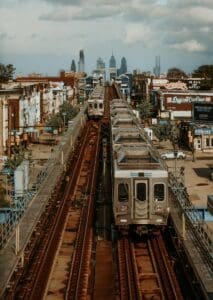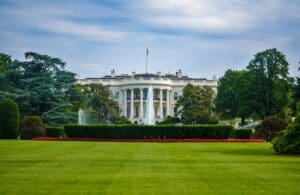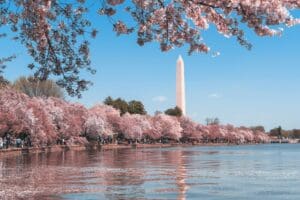By: MICHAEL BARBA.
San Francisco thinks it may have an answer for its rising gun violence problem: Paying people to not pull the trigger.
The idea is to provide the small number of San Franciscans who authorities believe are most at risk of shooting someone — or being shot — with an incentive to get help and stay out of trouble. It’s a solution that proponents say already has shown promise preventing gun crimes in other parts of California.
At worst, the program could be called “cash for criminals,” like its predecessors in cities around the Bay Area. At best, it could save lives and tax dollars otherwise spent on incarceration.
The program, which will launch as a pilot in October, is called the Dream Keeper Fellowship. It’s San Francisco’s latest iteration of a guaranteed-income program that will provide high-risk individuals with $300 a month as a start.
Participants will be able to earn up to $200 more a month by hitting milestones in the program, such as landing a job interview, complying with probation or consistently meeting with a mentor.
The initiative will pair participants with newly hired life coaches from the Street Violence Intervention Program, known as SVIP, who will help the them make the right choices and access services.
The theory is that the up to $500 stipend will serve as an incentive to participate — and stay engaged.
“We know that $500 in San Francisco is not a significant amount of money,” said Sheryl Davis, a proponent of the program and executive director of the Human Rights Commission. “But if it’s enough to get you in to talk to folks, and be able to make a plan for your life, then that’s huge.”
Another guaranteed-income solution?
This isn’t the first time a city has tried to reduce gun violence by offering cash. A similar anti-violence program in Oakland, for instance, offers young adults up to $300 for achieving milestones. What’s new is San Francisco would start people off with a baseline of $300 a month without having to meet any marks.
The program is modeled, in part, after the nationally watched Operation Peacemaker Fellowship in Richmond, which offers similar stipends of up to $1,000. A 2019 study published in the American Journal of Public Health linked the program to a 55% decrease in gun homicides and 43% decline in shootings since it began in 2010.
It’s also not San Francisco’s first guaranteed-income program. The City recently rolled out similar efforts for pregnant mothers from marginalized communities and artists struggling during the pandemic.
Officials want to kick off the latest program with about 10 participants in October, before expanding the stipends to another 30 high-risk individuals by the end of the year, officials said. They’ve already hired two life coaches to work with participants at SVIP and are looking to hire two more.
“What we are actually doing is trying to address the root causes of some of what’s happened,” Davis said. “Six thousand dollars per person, when you look at it annually, is nothing if it helps deter criminal activity compared to the amount of money it costs to incarcerate someone, let alone the impact of the activity itself.”
The program is being rolled out by the Human Rights Commission and Office of Economic and Workforce Development. It’s being funded in part through the Dream Keeper Initiative, an effort from Mayor London Breed and Supervisor Shamann Walton to divert funding from law enforcement to the Black community.
Breed recently touted the idea as being an effective anti-violence solution.
“My desire is to get to them, not to just make an arrest, but to get to them and to try and figure out if they would be willing to work with us on something that is an alternative,” Breed said at a Violence Prevention Summit hosted by the Human Rights Commission earlier this month.
“We can’t just put them in a program without making sure that they have money, without making sure that they have something to take care of themselves.”
Predictable, and preventable, violence
The effort comes as shootings are soaring in San Francisco, after years of declines. It’s a pattern being seen around the nation during the pandemic, even in cities like Oakland that already have cash incentive programs.
About twice as many people have been shot in San Francisco as of late July compared to either of the prior two years. During the same time period, police data show there were 21 gun homicides in 2021 compared to 15 in 2020 and 14 in 2019. The number of non-fatal shooting victims also rose to 108 from 51 and 50 in the previous two years.
Those numbers don’t even include a series of four fatal shootings that erupted within the span of five days earlier this month. (San Francisco has seen 34 homicides so far in 2021, as of August 26, compared to 32 at the same point last year. That number includes killings unrelated to gun violence.)
“Providing individuals with resources to survive and increase their options for success is integral in changing the trends of increased violence,” said Walton, president of the Board of Supervisors. “This is the perfect time for this strategy.”
The program builds on an analysis commissioned by the San Francisco Police Department that showed just how tangible solving gun violence in The City could be.
The analysis found that conflicts between just 12 street groups or gangs are driving the majority of gun violence in San Francisco. The groups tend to be made up of young Black and Latino men with extensive criminal histories who are considered very high-risk individuals.
The key takeaway for city officials and experts was the conflicts involve a small number of people — not the entire Black or Latino communities.
“When you look at it, you see it is a tightly concentrated, small number of people who have similar risk factors who are identifiable,” said David Muhammad, executive director of the National Institute for Criminal Justice Reform. “The violence is predictable, and therefore it is preventable.”
Using state grant funding, SFPD partnered with Muhammad’s group and another nonprofit, the California Partnership for Safe Communities, to conduct the analysis and help implement its findings. Muhammad estimated about 200 to 300 individuals would be considered high-risk over the course of a year.
“It’s not puny, but it’s also not thousands of people that just seems impossible to get your hands around,” Muhammad said. “If you are talking about a city with the massive resources that San Francisco has, 200 to 300 people should be a very doable thing.”
Here’s how it works.
Police already have started holding weekly meetings to analyze the dynamics behind shootings from the past seven days and identify individuals who they think could retaliate or be shot next. They then determine whether those individuals can be referred to violence prevention workers at SVIP for services.
At SVIP, the individuals will be connected with a life coach who builds a relationship with them and tries to use the relationship to influence them to make the right choices in life or connect with employment or other services.
Muhammad said simply getting someone a job isn’t always enough to stop them from engaging in violence.
“The challenge in this work is this is not service-brokering case management,” Muhammad said. “Or at least it’s not that alone. It’s relationship-based life coaching.”
While the stipends don’t come with spending restrictions, Muhammad isn’t concerned they’ll be used nefariously. The funds will be placed on reloadable gift cards and the spending will be tracked.
“There have been studies of guaranteed-income programs in Stockton, and other places, that really track how they were spending the money and showed that that was not the case at all,” Muhammad said. “Folks spent it on transportation and food and bills.”
Muhammad hopes to see the program serving 75 people a year at full steam. That will take more life coaches and infrastructure. As he put it, “we are not even close.”
Once the program is up and running, Muhammad believes it could reduce shootings driven by group or gang violence by half. But by his own assessment, the program might be a hard sell.
“What we are talking about is saying we are going to invest resources in this 25-year-old who has eight previous arrests, who is on parole, who is a proud member of a neighborhood clique and who is not even seeking services,” Muhammad said. “It’s just not a popular decision to make and may not be politically palatable, but that’s what you have to do in order to reduce gun violence.”




















